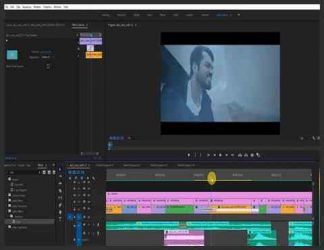You must need to login..!
توضیح
چگونی نورپردازی در فضای باز با رفلکتور ، فلش ، LED و … برای عکاسی پرتره
برای دانلود رایگان چگونی نورپردازی در فضای باز با رفلکتور ، فلش ، LED و … برای عکاسی پرتره با کیفیت 720p از پلیر سایت یا لینک زیر استفاده کنین
لینک دانلود link download
چند دقیقه قبل از طلوع آفتاب و پس از غروب آفتاب ، نوری که به زمین می رسد تغییر و تحولات بسیار خوبی را پشت سر می گذارد. در حالی که اشعه مستقیم وجود ندارد ، ما هنوز در گرگ و میش از نور خورشید در زیر افق غرق هستیم. آن گرگ و میش به عنوان آخرین پرتوهای تابش نور خورشید به پایین ابرها و پایین به چشم انداز می رسد و به عنوان نور محیطی باقیمانده که جو پراکنده است ، به ما می رسد. این دو ترکیب ، به همین دلیل این روز از روز آنقدر خاص و ارزش دارد که قبل از ترک طلوع آفتاب یا طلوع آفتاب به عنوان شام به عنوان شاهد شام افزایش یابد.
نیمه نوری باقیمانده محیط که با نزدیک شدن به طلوع خورشید روشن می شود و به محض غروب غرق می شود ، همه گرمی های خود را پس از گزاف گویی و پراکنده شدن در جو از خود دور کرده است. درجه حرارت رنگ آن بسیار مرتفع از آسمان است ، به مراتب بیش از 10،000K ، در نتیجه یک نور بسیار آبی و عملاً غیر جهت دار است. این گرگ و میش تک رنگ خنک برای کسانی که در مناظر دریایی دارای تابش آهسته آب چرخان هستند ، مورد علاقه شماست. همچنین نور مناسب برای عکس های شبانه از نقاط دیدنی روشن ، هنگامی که چراغ های مصنوعی در شهرها و شهرهای ما کاملاً مطابق با تنهای طولانی آسمان گرگ و میش است.
راهنمای نور در فضای باز – جهت نور
با چنین اختلافات گسترده ای وابسته به موقعیت مکانی ما هنگام برنامه ریزی شاخه ای ، باید بدانیم که خورشید قرار است بیاید و برود ، و در کجا در آسمان طلوع کند و غروب کند. باید اعتراف کنم که به تجربه متکی هستم ، اما پرداخت دقیق آن است. برنامه هایی مانند Ephemeris و PhotoPills The Photographer مفید هستند ، اما من به اتکا به آنها احتیاط می کنم. ما هنوز باید دریابیم که از کدام جهت می خواهیم نور را بکشیم تا به بهترین شکل منظره – جلو ، عقب ، کنار یا بالاتر را بکشیم.
نورپردازی جانبی پیش فرض مورد علاقه من برای کارهای چشم انداز است. پرتوهای کم طلوع خورشید در حال طلوع یا غروب خورشید در یک صحنه ، هر شکل ، بافت و کانتور در منظره را نشان می دهد. سایه ها اشکال محکمی را ارائه می دهند و جزئیات آن از کوکنارها در پیش زمینه تا کوههای دور از آن آشکار است.
Minutes before the sun rises and after it sets, the light reaching Earth goes through some great transformations. Whilst direct rays are absent we are still bathed in twilight from the sun below the horizon. That twilight reaches us as the last rays of sunlight bounce off the bottom of clouds and down into the landscape, and as residual ambient light that the atmosphere has scattered. The two combine, which is why this time of day is so special and worth rising before the crack of dawn or lingering as dinner beckons to witness.
The residual ambient half-light that either brightens as dawn approaches or dims as dusk settles has had all of the warmth stripped from it after being bounced and scattered through the atmosphere. Its colour temperature is sky-high, well in excess of 10,000K, resulting in a very blue light, and virtually non-directional. This cool monochromatic twilight is a favourite for those hooked on seascapes with slow exposures of swirling water. It’s also the perfect light for night shots of illuminated landmarks, when the artificial lights of our towns and cities perfectly match the lingering tones of the twilight sky.
Guide to outdoor light – Direction of light
With such wide discrepancies dependent on our location when planning a shoot we need to know when the sun is due to come and go, and where in the sky it will rise and set. I have to admit I rely on experience, but it pays to be precise. Apps such as The Photographer’s Ephemeris and PhotoPills are handy, but I’m cautious of relying on them. We still need to ascertain which direction we want the light to be coming from to paint the landscape best – front, back, side or above.
Side lighting is my favoured default for landscape work. The low rays of a rising or setting sun slanting across a scene reveal every shape, texture and contour in the landscape. Shadows provide strong shapes and every detail from the poppies in the foreground to the distant mountains beyond is apparent.















